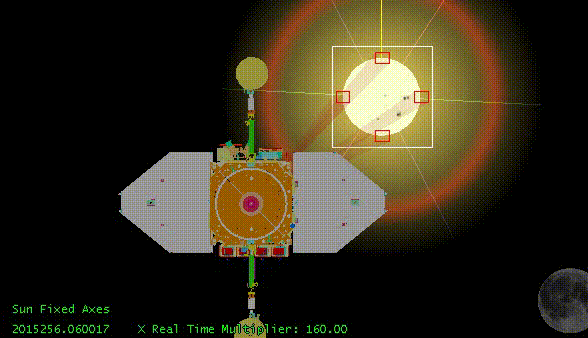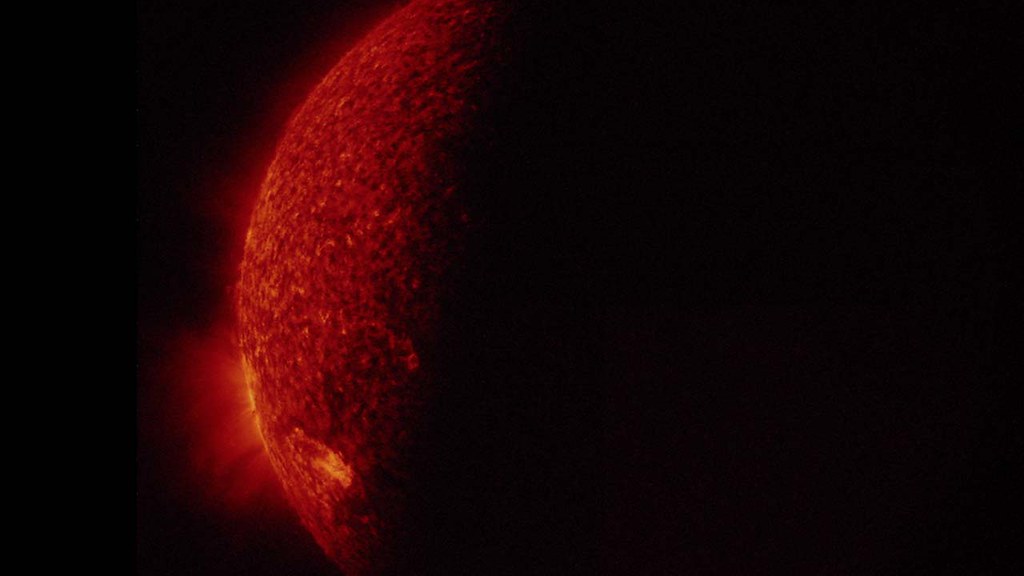Watch NASA get photobombed by Earth and the Moon
Meteorologist/Science Writer
Tuesday, September 15, 2015, 11:20 AM - NASA's sunwatching satellite - the Solar Dynamics Observatory - got photobombed this past weekend, not once, but twice! How did this happen? Watch to find out!
SDO is part of NASA's fleet of solar observatories, meant to keep a close eye on our parent star for sunspots, solar flares and any unusual activity.
Snapping pictures of the Sun once every minute or so, using various filters to see different wavelengths of its light - and thus different features on its surface and surrounding it - SDO is an invaluable resource to solar scientists and to those who watch out for the safety of our orbiting technology and power grids here on the ground.
Once in awhile, though, SDO's unblinking view of the Sun is blocked, either by the Moon, or by the Earth.
This happens periodically, and according to the SDO mission blog, SDOisGO, we are in the middle of the satellite's Fall 2015's Eclipse Season:
Eclipse season is a result of our geosynchronous orbit. We don't like missing the Sun for up to 72 minutes each day. But the constant contact with SDO allows the high speed data downlink we use to bring the Sun to everyone.
SDO orbits within the ring of geosynchronous satellites that surrounds our planet, at around 35,000 kms out. From there, and with the right angle of inclination, the satellite enjoys a (mostly) unobstructed view of the Sun year-round.
When it is interrupted, this shows up quite dramatically in the imagery it sends back to Earth.
On September 13, SDO's view was blocked by not one, but two different objects. First the Earth got in the way, and even after the planet had cleared out of the field of view, the Moon was in the picture too!


Credit: NASA Goddard
The above picture, taken with SDO's AIA instrument, using the filter that allows it to see temperatures of around 50,000 Kelvin, and spot cooler prominences and filaments above the Sun's surface. As the SDO team wrote back in August:
You can see the edge of the Earth is rough, where the absorption of the Earth's atmosphere dims but does not block the light. This is different from the lunar transits, such as the one coming up on September 13, where the Moon's edge is very crisp. That transit occurs near the end of that day's eclipse and coincides with a solar eclipse in the far southern parts of the Earth.

The Moon's crisp edge covers part of SDO's view of the Sun. Credit: NASA Goddard
For more on SDO and its up-to-the-minute views of our Sun, check out NASA's Solar Dynamics Observatory website.
Source: NASA



